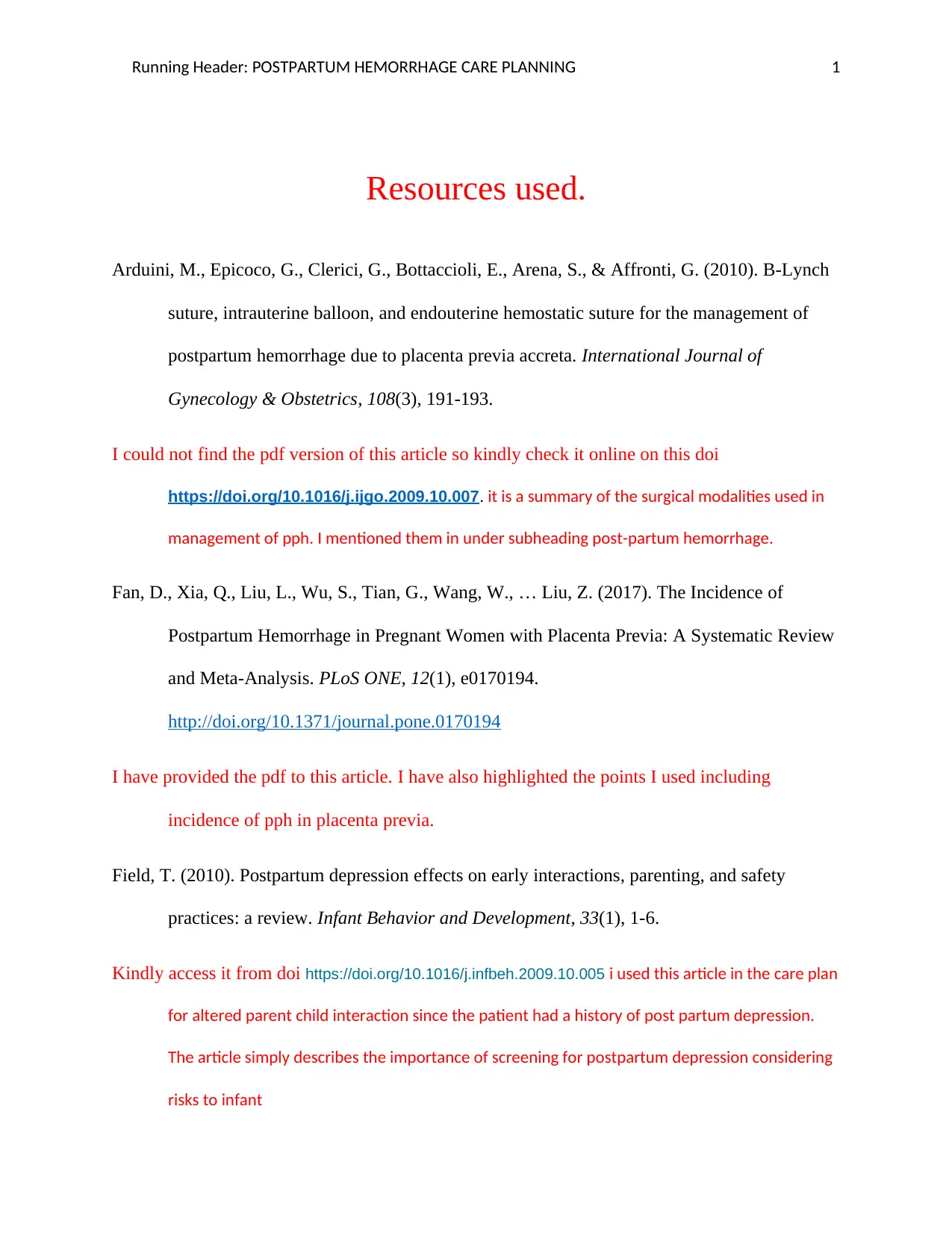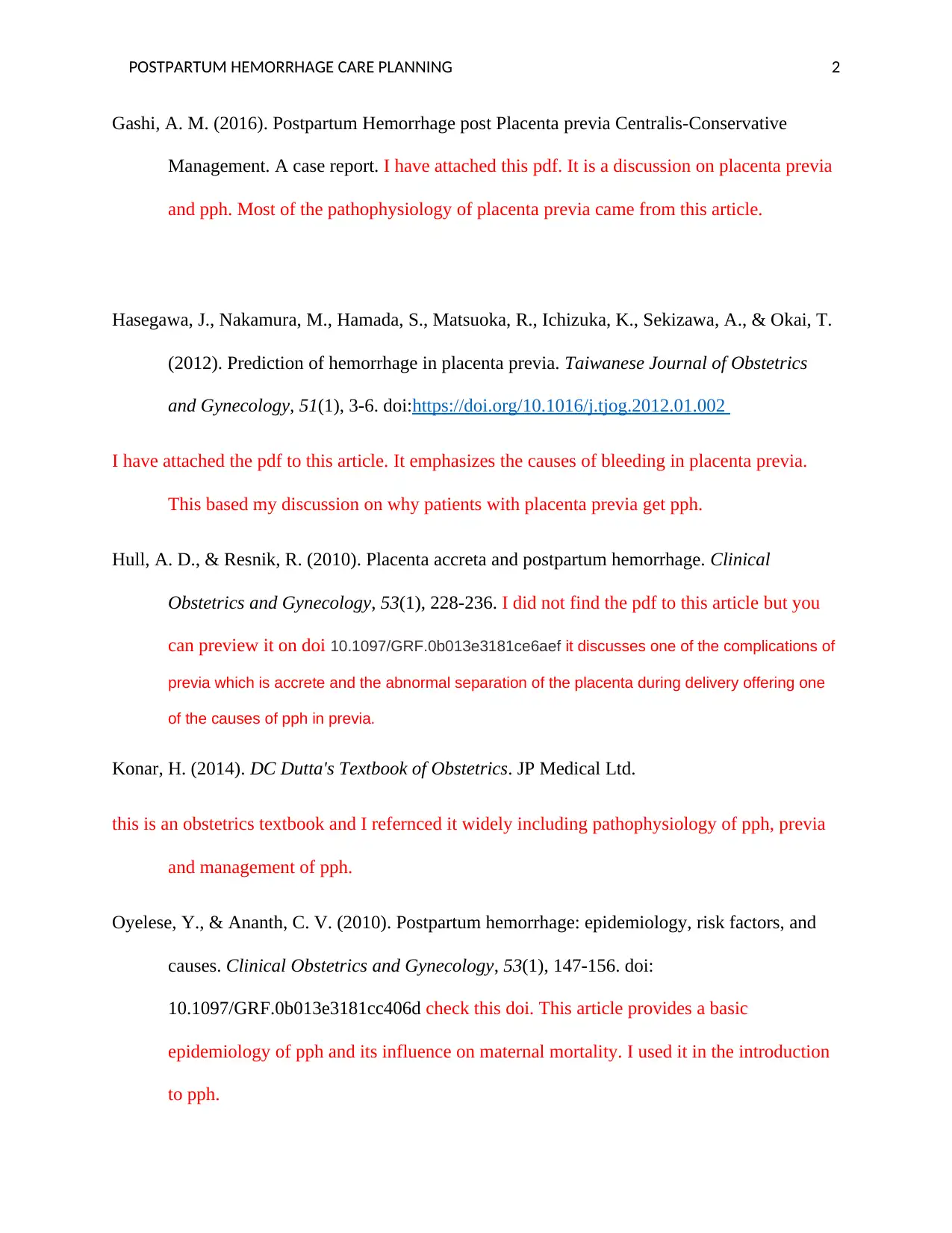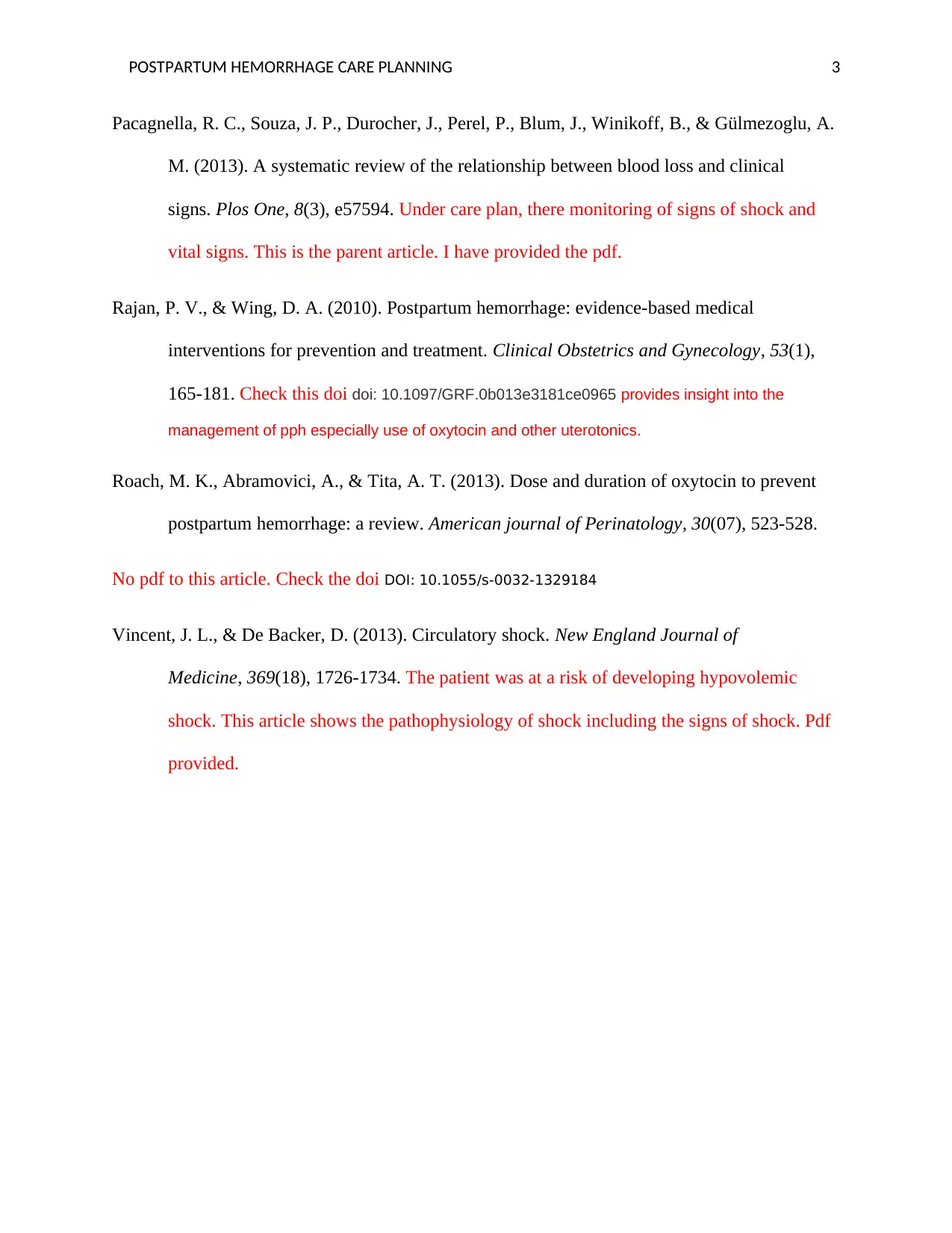Postpartum Hemorrhage Care Plan for a Patient with Placenta Previa
VerifiedAdded on 2023/06/08
|3
|875
|104
Case Study
AI Summary
This case study presents a postpartum hemorrhage (PPH) care plan for a 42-year-old woman, Candace Evans, who underwent an elective lower uterine caesarean section (LUCS) at 38 weeks gestation due to placenta previa. The assignment details the patient's pre-operative assessment, including her history of gestational diabetes, depression, anxiety, and post-natal depression. Upon arrival in the Post-Anesthetic Care Unit (PACU), Candace's vital signs, dermatome level, and current intravenous therapy of Oxytocin are assessed. The care plan addresses the sudden increase in vaginal bleeding, indicating PPH. The case study explores the pathophysiology of PPH, risk factors, and various management strategies, including the use of uterotonic agents and monitoring for signs of shock. The care plan also addresses the patient's history of postpartum depression and potential impact on parent-child interaction. The plan incorporates evidence-based interventions and monitoring parameters to ensure optimal patient outcomes, drawing on resources such as medical journals and textbooks to support the care provided.
1 out of 3




![[object Object]](/_next/static/media/star-bottom.7253800d.svg)